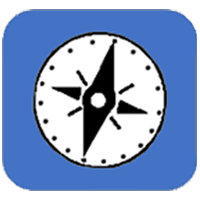Events

Evaluating native seed mixes for post-fire seeding the Great Basin
Webinar recording. Description: Post-fire seeding has been widely implemented in the Great Basin in response to the threat of resource degradation and weed invasion following fire disturbance. The longstanding practice of seeding non-native forage grasses has worked well for some purposes, but seeding native species is a more sensible choice if natural vegetation recovery is…

Managing drought on targeted grazing landscapes
Webinar recording. Description: This webinar features a rancher and land manager panel discussing drought on targeted grazing landscapes. Panelists: Andrée Soares, President – Star Creek Land Stewards LLC (Los Banos) and member of RMAC; Brad Fowler, Owner – The Goat Works (Grass Valley); Nathan Medlar, Owner – NM Ranch Services (Auburn) Questions? Please contact Dan…

Low-tech, process-based riverscape restoration: Virtual workshop
Virtual workshop resources. This virtual workshop will introduce conservationists to ‘low-tech’ process-based approaches for restoring streams and their associated riparian areas (riverscapes) to benefit fish, wildlife, and working lands. Participants will learn principles guiding low-tech process-based restoration and become familiar with simple, hand-built tools, including Beaver Dam Analogues (BDAs) and Post-Assisted Log Structures (PALS), intended…

Grazing for fire prevention
Webinar recording. Panel discussion on grazing for fire prevention with Tracy Schohr, UCCE Livestock and Natural Resources Advisor for Plumas, Sierra & Butte Counties.

Sharing Science and Lessons Learned: COVID-19 and Wildfire
Webinar recording. Description: As COVID-19 cases and wildland fire activity increase across the country, wildland fire personnel are looking for ways to quickly identify cases and prevent the spread of the disease on the fireline. The Southwest Fire Consortium will be hosting a webinar sharing information about the current state of the science and lessons learned…

International seed standards launch: Introductory webinar and panel discussion
Webinar recording Description: To ensure as many of you, the suppliers, end-users, industry, government and NGO’s have an opportunity to learn and speak first hand with some of the authors of the Native Seed Standards, we welcome you to dial into our launch event. This is your chance to find out what the Standards mean…

Resilience in national forest planning
Webinar recording. Description: Recent policies including the Cohesive Strategy and the 2012 NFMA planning rule emphasize restoration of landscape resilience as a way forward for living with fire on national forestlands. But what does resilience mean, what does it take to plan for resilient landscapes, and what other factors complicate the achievement of resilient landscape…

From parallel play to co-management: Conserving landscapes at risk of wildfire in the West
Webinar recording Description: Wildfire has fundamentally shaped the western landscapes we seek to conserve. It is a source of renewal and central to the functioning of many ecosystems; as well as a destructive force that threatens communities and conservation values across public and private lands. Wildfire epitomizes myriad connectivities that we cannot escape. Yet as…

Collaborative forest landscape restoration program monitoring: A peer learning session
Webinar recording Description: During this session, USDA Forest Service and collaborative members will explore lessons learned in the first 10 years of CFLRP monitoring - what worked well and what challenges we continue to encounter in the multi-party monitoring of ecological, social, and economic effects. Given those lessons, we will then discuss where we go…

Southwest FireCLIME: Collaborative tools and science developed through JFSP
View short video (6:30) Southwest FireCLIME is a multi-year research partnership between scientists and resource managers to synthesize current knowledge of regional climate-fire-ecosystem dynamics. Our project has addressed this goal through science synthesis, an annotated bibliography, modeling, a vulnerability assessment, and Fire-Climate adaptation tools.

